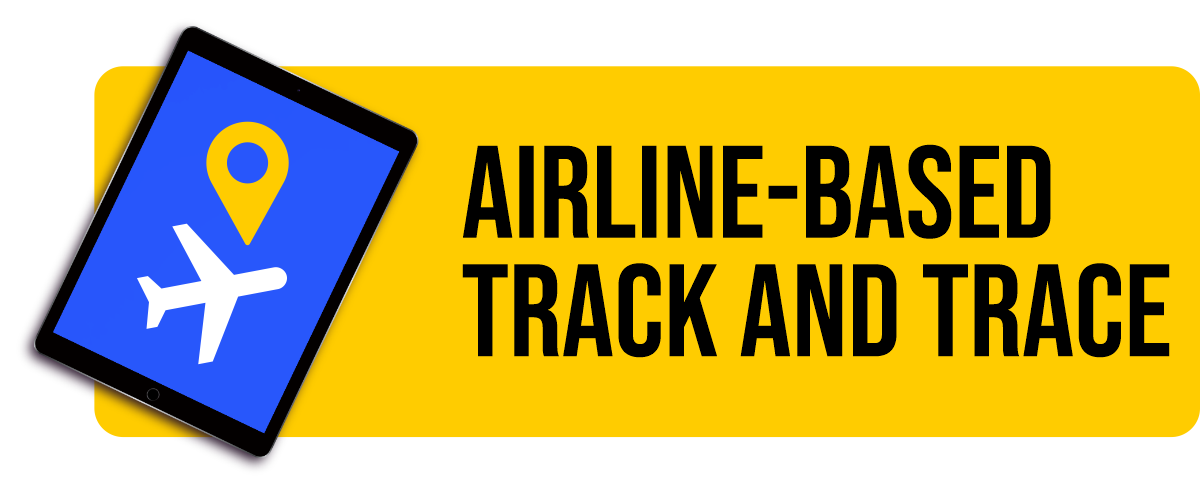Air shipments are the quickest and safest way to transport goods, but when it comes to tracking them, the options could get tricky! The in-air segment of your air cargo’s journey is only one part and constitutes a considerably smaller part of the journey’s time on an average, the remaining comprises of the first mile, time spent in storage, time spent at airports, and the last mile. So, what’s the best option? Is it through your airline? Is it through your freight forwarder? Is it by using GPS devices? Or is there something more reliable and accurate in the market? What about the regulatory compliances that come along with tracking? Let’s find out!
Although air shipment is the fastest way to go, it’s also undoubtedly the trickiest to monitor. Notice the use of the word ‘monitor’, since we already have ways to trace these shipments, what we still don’t have is a perfect plan to monitor them at the first mile, at the airport, at customs, on the plane, and at the last mile.
Sounds like an impossible thing to do while all you know you can do is track the plane. Let’s see how far we have come to figure this complicated process out. There are 3 well-known ways you could track your air cargo. Weighing each of them based on what you can and cannot get out of them would probably give you a better idea on what you need.

Airline-based Track & Trace
You can keep logging in to your respective airline portals and check from time to time, which is still a very lengthy and taxing manual process that has high chances of error.
A better thing would be to automate the process by connecting your internal applications to the airlines systems, or in other terms, integrating the AWB tracking system with your internal ERP. But this could be a little complicated if your organization doesn't have an internal integration team. In that case, it would be rather better to find a partner to help you with the integration process.
However, the data you get is very limited.
What you get:
- Flight Location: it gives you visibility on your flight from take-off to landing.
- EDI-based scans at airports: which enable smooth movement of shipping documents.
What you don’t get:
- First and last mile visibility: you only get partial visibility on the shipment, with no proper idea on what happened on the way.
- Condition data: you get no information on the condition of your goods or whether your cargo reached in perfect condition, or in full.
- Customs status: it can’t tell you if your goods are stuck at the customs, or are going to be released late delaying everything else.
- Info on package segregation at airport: it can’t tell you if one of your packages was severed from the shipment during the process.
- 100% confirmation about the freight on board: you wouldn't know if your cargo is on the flight you’re tracking, or anything about the in-flight cargo conditions.
![]()
Freight Forwarder’s Tracking System
A better way to track your air cargo would be to get more information on your air cargo through your freight forwarder — by getting a combination of data from airline portals and APIs from GPS trackers used by the transporter’s trucks. Using this system, you can also get constant data about your multimodal shipments which isn’t possible if you’re using airline-based tracking.
What you get:
- Location of the flight: it tells you where the flight is and when it reaches the destination.
- Partial first and last mile visibility: it can provide visibility on first and last mile, but only if GPS is available on the vehicles, and no live condition data.
- EDI-based scans at airports: it takes care of the shipping documents.
- Warehouse data: it provides information when your shipment is scanned in and out at the freight forwarder’s warehouse.
- Customs status: you get the customs status of your packages through EDI; however, the more minute details are mostly manual through your freight forwarder’s personnel available at the customs facility.
What you don’t get:
- Condition data: you will not find out if your shipment’s temperature or other conditions (including handling) went for a toss, let alone being able to tackle it.
- Package segregation information: there’s no way to know if a couple of your packages are left straying at the airport, until the incomplete shipment reaches the destination and something seems amiss.
- 100% confirmation about the freight on board: you will not get to know whether all the boxes of your air shipment made it on board.
![]()
GPS Tracker-based Tracking System
This could easily be called the simplest of all the three ways to track an air shipment or multimodal shipments. All you need to do is get wireless GPS devices and send them with your consignments. The device will constantly collect and send data from your shipment depending on the kind of network connectivity it gets.
What you get:
- End-to-end location: except in-flight information, including the first and last mile visibility.
What you don’t get:
- Condition data: the GPS trackers wouldn’t be able to tell you the temperature, shock, or tilt excursions your goods went through during the journey.
- Info on package segregation at airport: if one of your packages is severed you wouldn’t know, because the tracking is on shipment level, not on package-level.
- 100% confirmation about the freight on board: it cannot tell you about the on-board status of the cargo, or any in-flight information.
- Customs status: it can tell you when your cargo is at the customs but can give no idea about the status of the process.
The Risks:
In addition to these limitations, there are some risks that GPS-based trackers are exposed to:
- Airline rejections: The device needs to be approved by an airline to be able to be attached to the shipment. It cannot be used if your consignment is traveling on an airline that hasn’t approved your devices.
- Limitation of load-size trackable: Due to the presence of Lithium-Ion battery (the same component that causes the Samsung Galaxy Note concern) is present in GPS trackers, Lithium-Ion is categorized as Dangerous Goods (or DG) in air travel. Therefore, there is a limitation of just 2 trackers per Airway-Bill (AWB). If you have more than 2 packages in your AWB, then you will not be able to tag each of them, which is a major blocker against the benefit of ensuring that you can identify when a load gets split.
- Inability to recover them from the destination: It is a tough task to carry the reverse logistics for these GPS tracking devices, which makes it both a costly affair and a time-consuming process.
There are more than the above 3 reasons you should rethink your whole air shipment tracking system. Wondering how?
What If There Was a Fourth Solution?
One that Gives You Everything the Above Three Cannot!
What if you find a solution for everything that the airline-based tracking, your freight forwarder's tracking system, and GPS-based tracking haven't been able to address?
Because there is one — a solution that follows your shipment wherever it goes and tells you everything about it, as if you were travelling with it yourself.
What we’re talking about is an on-demand air cargo monitoring solution that would blend real-time sensor data with actionability. You need a solution that would enable you to take timely actions by making correct and timely use of the data you get from it on your cargo.
This is precisely what we spent months building at Roambee!

Get the solution that monitors your air cargo using sensors and external data elements and keeps you on top of your air cargo by letting you virtually be with it all the time during its journey – with zero regulatory issues in deployment. In short, real, real-time, relevant data, that provides you all you need to perfect your air cargo supply chain process:
- First mile to last mile coverage: real-time data that tells you everything at the first-mile, last-mile, and in between — in the warehouse, on its way to the airport, at the airport, in the flight, at the customs, and at the last mile.
- Package-level data: as against shipment level data, so you know even if a single package is damaged or stranded.
- Condition data: so that you know more than just the location of your shipment — temperature excursions, shock, humidity — things that really affect your goods.
- Preemptive alerts: on delays, stoppage, route changes, condition changes, so the right person knows the right things at the right time and can take timely actions.
- ETA alerts: that enable better inventory management helping you make vital route-optimization decisions like choosing the right airport and the best delivery route based on insight and analysis of data.
- Prescriptive analytics and AI: that help you make better and predictive actions before events even take place, so you stay on top of your cargo in true sense. The AI-driven prescriptive analytics will make sure your actions are predictive and not corrective.
- Customs status data: be in the know of each step even during customs check — when the packages are opened, when they're being inspected, when the process gets delayed, and the like — enabling you to expedite the process with the help of your CHA.
- Easy device reverse logistics: which means your solution provider takes care of taking the devices back from you once used, without you having to worry about the logistics.
- Airline approvals: make sure the solution you use has maximum airline approvals for its devices to be used to monitor your shipments.
- No sensor quantity restrictions per AWB or regulatory issues caused by Lithium batteries: the biggest challenge in moving away from Li -Ion batteries was to figure a way to optimize battery life of our trackers. This took a huge effort on the hardware and firmware engineering front.
In Summary
Any shipment clearly needs more information than just the basic whereabouts if it needs to reach its destination on time, in full, and damage-free. For this to be possible, you need to get a system that provides real-time actionable data without having to set up a heavy infrastructure and spending a bomb on the equipment. What would be brilliant in such a system is that the solution requires minimal manual intervention, that is possible because of the technologically sound trio IoT+AI+RPA. There can be nothing like having all this in one single solution.














